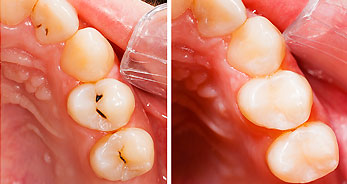
Inlays and Onlays
Inlays and onlays are a type of dental filling utilized to repair a damaged tooth. They are different from standard fillings as they have a two stage processes that requires a dental laboratory. For example, an inlay or onlay requires two visits but an immediate filling requires a one visit.
They are a different option for a cosmetic crown and are favored by individuals with a mild type of tooth decay. Inlays and onlays are produced using an assortment of materials which incorporate porcelain and composite resins.
There are two sorts of inlays and onlays:
- All ceramic inlays and onlays
- Composite inlays and onlays
Different choices comprise direct white fillings which are examined independently.
WHAT ARE INLAYS AND ONLAYS?
An inlay is a sort of filling in which the material utilized is put inside the cavity of the tooth. In this case, it is very much like the ordinary composite white filling.
An onlay filling is the place the material is embedded into the cavity of the tooth as well as over the surface of the tooth also.
These are known as ‘indirect fillings’ which implies that they are manufactured in a lab prior to be placed in/on your tooth.
They are frequently used on the back teeth as those are the teeth we use the most and are the most hard to clean. This likewise implies these are the teeth that will most likely get a cavity.
ADVANTAGE OF INLAYS AND ONLAYS
Inlays and Onlays are solid, tough and less inclined to stain (unlike the composite version). They are alluring looking and improve the general appearance of your teeth.
An inlay and/or onlay can last up to 30 years which is considerably more than a standard filling.
DISADVANTAGE OF INLAYS AND ONLAYS
They require two visits to the dentist rather than one.
Cost is another factor: inlay and onlays have a tendency to be more costly than standard fillings which is because of the materials utilized in addition to the time frame.
HOW ARE INLAYS AND ONLAYS FITTED?
There are two stages to this procedure which varies from a typical filling which is done as one system. This strategy is performed under a local anesthetic.
The initial stage is the making of a mold taken from an impression of your harmed tooth which is utilized as an aide for a cast. The cast is utilized to create the inlays or onlays.
The second stage involves the fitting of the inlay or onlay. We will check the fitting before securing it with dental cement. This guarantees it stays in place. The colour will be checked and a final polish will be done.


